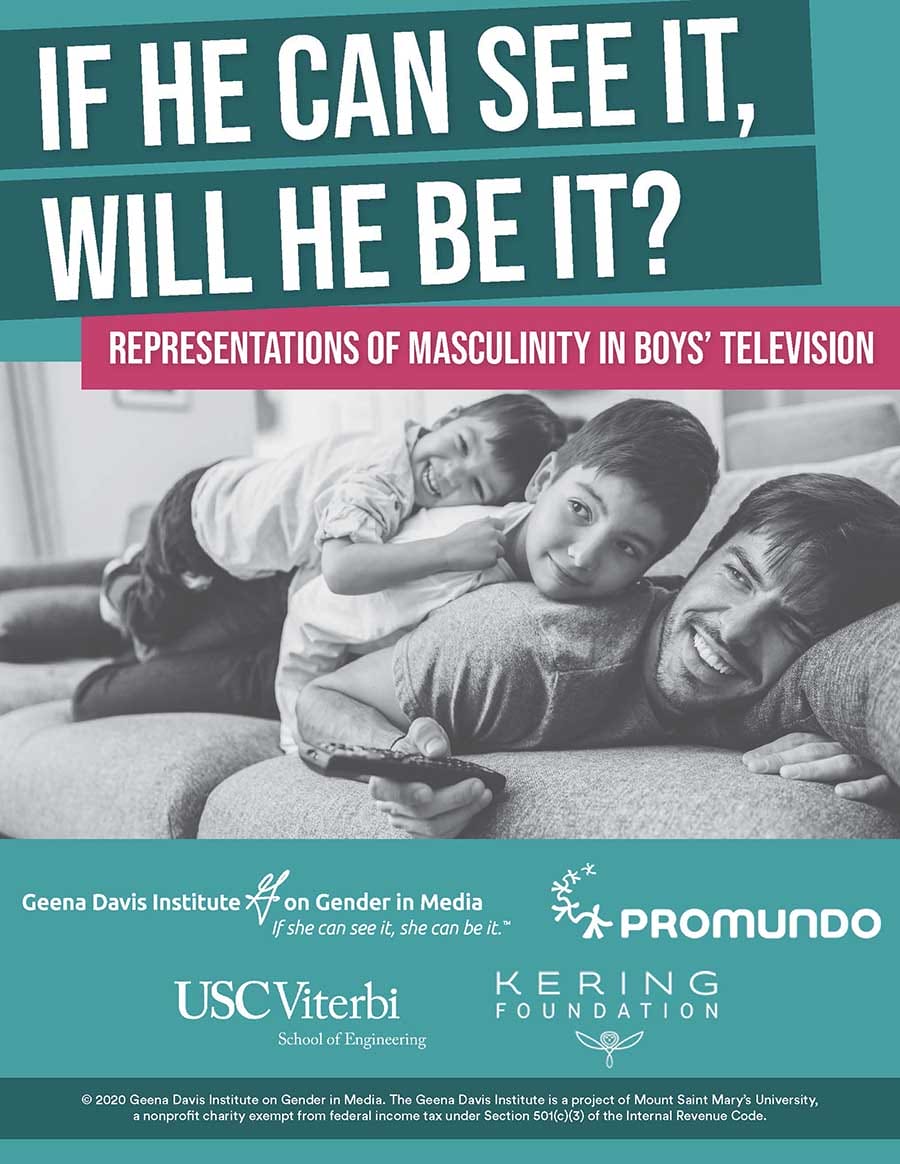

In collaboration with Equimundo (formally Promundo) and the Kering Foundation, we examined messages about masculinity in popular television programming, focusing on the content for representations of the “man box,” which is concerned with pillars of masculinity reflecting cultural beliefs about how “real men” should behave. Media representations of masculinity affect the well-being and behavior of boys and men, which can impact women and girls. Additional data for this report was provided by the Signal Analysis and Interpretation Laboratory (SAIL) at the University of Southern California Viterbi School of Engineering.
For this study, the 25 shows most popular among boys ages 7 to 13 in 2018, according to Nielsen, were analyzed. The television dataset contained a total of 3,056 characters from 447 episodes.
Key Findings
- Man-Box Pillar: Self-Sufficiency
- Boys are more likely than girls to be shown without parents (57.0% compared with 42.8%).
- Girls are more likely than boys to be shown in a close relationship with their mothers (6.4% compared with 3.8%).
- Man-Box Pillar: Acting Tough
- Male characters are less likely than female characters to show emotions, including empathy (22.5% compared with 30.6%), happiness (68.3% compared with 75.2%), and even anger (28.8% compared with 36.6%).
- Man-Box Pillar: Aggression and Control
- Male characters commit 62.5% of the violent acts shown against another person.
- Male characters are more likely than female characters to be victims of violence (23.1% compared with 13.6%).
Recommendations
- Avoid common stereotypes about men and parenting. Allow male characters to be primary caregivers who are competent and involved in the day-to-day lives of those they care for. Show male characters packing school lunches, driving kids to school, helping with household chores, and emotionally connecting to sons, daughters, and others.
- Allow male characters to express a full range of emotions. Include male characters that model close friendships, family relationships, and healthy expressions of emotions. Avoid using vulnerable emotions (e.g., sadness, fear) as a catalyst for destructive behavior.
- Show boys and young men asking for help, particularly from parents. Avoid depicting boys and men as solitary or as having to “go at it alone.” Allow male characters to maintain social and familial relationships and to seek out support from others.

